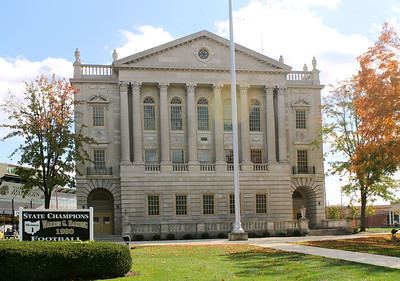According to national data, about one out of five community college students are also enrolled in high school. Community colleges have welcomed the influx of high school students because they fluff up the enrollment numbers.
Researchers (and state auditors) who have examined the impact of dual enrollment on community colleges aren’t left gushing by what they have found. In Ohio, for example, the State Auditor there found that community colleges often get the short end of the stick when dual enrolled high school students take classes on campus.
That’s because the money community colleges receive from local school districts often falls short of what the community college needs to provide instruction and the student services that go along with being a community college student. While dual enrollment may put students in classroom seats, the colleges often find themselves in a worse financial position.
If community colleges now depend on local school districts for 15%-20% of their annual revenue, then Baltimore County Public Schools have just delivered some bad news: BCPS won’t be paying for dual enrollment going forward.
BCPS is having budgetary problems, so subcontracting the job of educating high school students is too rich for the district’s budget. Going forward, the district will exclude 9th and 10th grade students from participating in its “Tuition Free” program. The program pays for BCSP students’ tuition, books, and fees related to community college classwork.
Instead, 11th and 12th grade students whom the district considers “college- and career-ready” will be allowed to take up to four credit classes or industry certification courses on the district’s dime.
Dual enrollment may account for 10% of Fall headcount
According to BCPS, the change isn’t simply a response to budgetary shortfalls. Instead, the district is implementing new standards approved by the Maryland State Board of Education last month. The new standards are part of a statewide education reform plan that seeks to increase the number of students who are academically prepared to enter either post-secondary institutions or the workforce after high school.
Otherwise eligible students who don’t meet the “readiness” standards could receive a 50% tuition waiver from the district, but they would need to pay for their books and fees on their own.
The bad news for community colleges is that BCPS just started paying for coursework for its students about a year and a half ago. Students latched on to the program. BCPS student enrollment increased by 65% over the 2022 summer, and by nearly one-quarter in the fall of 2022. And for bureaucratic and financial reasons, the popular program is not sustainable. It only took 18 months for BCPS administrators to figure out that the numbers weren’t adding up and weren’t going to add up.
For community colleges in Maryland that are already reeling from a $22M cut to their state appropriations, losing dual enrolled students may hurt. According to federal data, more than 10% of Baltimore City Community College students enrolled in Fall 2022 were under the age of 18. Baltimore may be the first school district to restrict dual enrollment or cut it altogether in an effort to balance the books, but it won’t likely be the last. It’s another reason for community colleges to avoid becoming dependent on their local K-12 districts for too much revenue.
Photo Credit: Jack Pearce, via Flickr














